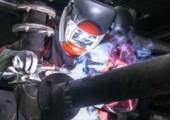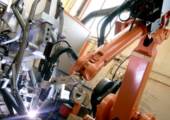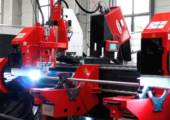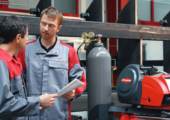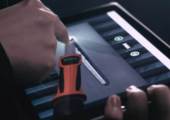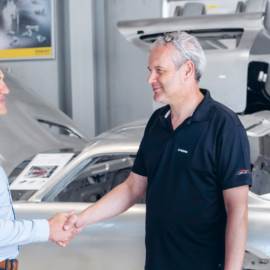-


在线留言
发送您的问题或需求,我们将尽快与您取得联系!
×
-
"NOTHING IS IMPOSSIBLE"
AN INSIGHT INTO THE JOINING TECHNOLOGY CENTER AT MAGNA STEYR
07/21/2020

At first glance, it looks like a museum for innovative technologies. It is bright and sleek, and the exhibits are meticulously labeled. Many of the exhibits are complete bodywork components such as doors or B-pillars, others are small test sheets made from a variety of different metals. There is also a complete vehicle body, on which the welding spots, seams, and rivets are clearly visible. All around there are retractable banners, signs, and devices, but occasional paper notes hint at the fact that this is actually a place of work.
Many of the machines in this hall are resistance spot welding systems, as the clean thermal joining process is very popular in automotive engineering. The new DeltaCon from Fronius for spot welding aluminum is among the machines b eing tested here.
Together with his six-strong team, he runs the Joining Technology Center at Magna Steyr in the Austrian city of Graz. The company manufactures complete vehicles here – such as the Mercedes-Benz G Class, BMW 5 Series, BMW Z4, Toyota GR Supra, and Jaguar E-PACE and I-PACE. Hot and cold joining techniques for use in bodywork construction are developed and thoroughly tested at the center: Which materials is the process suitable for? Are the joints metallurgically stable? Is it feasible for employees to carry out this process in practice? And last but not least: Is it cost effective?
After passing through the entrance hall, next you come across manual welding stations, testing stations, and robot cells. The place is packed with high-tech equipment, such as devices for metallurgical testing, complexlooking laser heads, state-of-the art welding systems, and much more besides. The Joining Technology Center needs all of this equipment as it conducts everything from initial trials all the way up to the metallurgical approval of the material. This covers all conventional joining techniques such as punch rivets, resistance spot welding, screwing and bolting, bonding, clinching, MIG/MAG welding, and laser processes. “A mixture of materials makes the joining technology even more important, but also more complex”, says Karner, explaining the reason behind the variety of techniques.
STRONG CONNECTIONS ARE KEY
Testing and developing products isn’t the Joining Technology Center’s only function. The team is also on standby for any problems that may arise during series production, and they even train apprentices. Every technical apprentice at Magna Steyr must learn to weld – in 2019, there were around seventy trainees. Werner Karner is particularly pleased about this, as a qualified and passionate welder himself. “MIG/MAG welding is being avoided as far as possible for automotive bodywork construction, but time and again the need still arises. Even with new developments such as battery trays, a lot of welding is required.” The reason can be explained in just a few words: Christoph Pangerl from Fronius can only agree. As Key Account Manager, he works closely with Magna Steyr. The two companies are constantly developing new solutions together – be they solutions for welding steel and aluminum, or solutions for particularly efficient aluminum spot welding. “Nothing is impossible” is the head of the Joining Technology Center’s motto. He is keen to point out that everyone at Fronius provides him with the best possible support to make this mindset a reality. Karner has been working together with Fronius for more than thirty years; a partnership that is very important to him. “I can rely on Fronius completely – if I need anything, Fronius is there. The service is the best. It’s a very honest relationship.” The Joining Technology Center is currently focusing in particular on testing the DeltaCon resistance spot welding gun. Magna Steyr are long-term users of the TPS/i welding systems with the Fronius CMT process as well as TransSteel welding systems.
The two exchange a smile – it is immediately obvious that this is a friendship, as well as a business partnership. In the truest sense of the word, Karner and Pangerl are welded together by the challenges they have solved together
Magna Steyr is part of the Canadian-Austrian Magna Group. The brandindependent vehicle contract manufacturer develops and produces complete vehicles for OEMs. Magna Steyr enjoys a history stretching back over 100 years, during which time it has built more than 3.5 million vehicles across 29 different models. The Joining Technology Center at Magna Steyr is part of the Painted Body Business Unit and is located at the Magna Steyr headquarters in Graz.
-


 下载
下载
 会员中心
会员中心



 收起
收起
